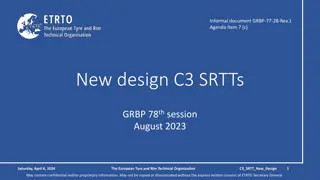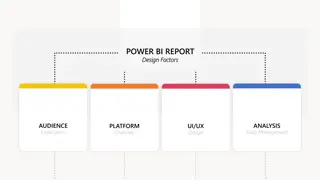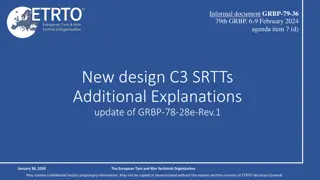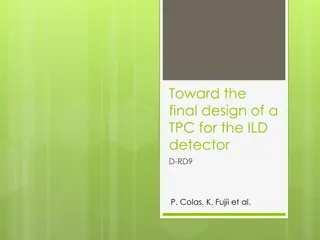
Biophilic Design Approach for Improved Performance
Biophilic Design Approach for Improved Performance. Sustainable Buildings. Nature, Quality of Life, Sustainable, Green. Ar. Prajna Aigal Research Associate, Sustainable Buildings The Energy and Resources Institute. What is “ Biophilic ”?.
Uploaded on | 14 Views
Download Presentation

Please find below an Image/Link to download the presentation.
The content on the website is provided AS IS for your information and personal use only. It may not be sold, licensed, or shared on other websites without obtaining consent from the author. Download presentation by click this link. If you encounter any issues during the download, it is possible that the publisher has removed the file from their server.
E N D
Presentation Transcript
Biophilic Design Approach for Improved Performance Sustainable Buildings Nature, Quality of Life, Sustainable, Green Ar. Prajna Aigal Research Associate, Sustainable Buildings The Energy and Resources Institute
What is Biophilic? The human tendency to interact or be closely associated with other forms of life in nature -Merriam Webster Biophilic architecture seeks to connect people with nature within buildings and built spaces. It is based on the philosophy that humans have the innate tendency to connect with nature. It incorporates natural elements in the design to enhance the well-being of the occupants of the space in terms of health, happiness and overall quality of life.
Biophilic vs. Sustainable vs. Green Emphasis on Social Aspects Emphasis on Environmental Aspects
Environment Social Sustainable Development Biophilic vs. Sustainable vs. Green Economic Biophilic Green Sustainability
What all comprises biophilic design? Environmental Features Natural Patterns and Forms Light and Space Place-based Relationships Connection with Nature Characteristics of the natural world such as water features, sunlight, vegetation etc. Using patterns and forms that are naturally found in nature such as shapes, motifs etc. Using lighting to enhance the space especially natural lighting Connection with local ecology and geographical features Enhancing the inherent connection between humans and nature
Integrating biophilicdesign into biophilic architecture 1 Provision of vegetative and water elements at regular intervals throughout the building 2 Provision of natural lighting and ventilation over artificial lighting and HVAC
Biophilic into Green Types of Plants Lighting Requirement Types of Water Fixtures Vegetative and Water Features Lighting and Ventilation Ventilation Requirement Irrigation Lighting and Ventilation Fixtures Water Supply CLIMATE
Biophilic into Green Use of plants that are native to the location and/or adaptive to the climate Types of Plants Vegetative and Water Features
Biophilic into Green Types of Water Fixtures Water features that are efficient in terms of water usage and losses • Smaller sizes • Recycling water • Use of plants to reduce evaporation • Shading to reduce evaporation Vegetative and Water Features
Biophilic into Green Irrigation Use of efficient irrigation systems such as sprinklers or drip irrigation Vegetative and Water Features
Biophilic into Green Biophilic into Green Water Supply Use of harvested rain water or treated sewage water in irrigation and water features Vegetative and Water Features
Biophilic into Green Lighting Requirement Amount of lighting and type of lighting required as per the function of the space • Daylight Factor Requirements for Different Types of Spaces as per SP 41 Lighting and Ventilation
Biophilic into Green Lighting Requirement Amount of lighting and type of lighting required as per the function of the space • Illumination Level Requirements for Different Types of Spaces as per NBC As per Table 4, under section Lighting and Natural Ventilation Vol. 2, NBC 2016 Lighting and Ventilation
Biophilic into Green Ventilation Requirement Amount of ventilation and type of ventilation required as per the function of the space • Desirable wind speeds for thermal comfort conditions as per NBC As per Table 9, under section Lighting and Natural Ventilation Vol. 2, NBC 2016 Lighting and Ventilation
Biophilic into Green Lighting and Ventilation Fixtures Use of energy efficient lighting and ventilation devices in the space Lighting and Ventilation
Benefits of biophilic and green architecture 1 User satisfaction and increased productivity 2 Reduction in use of comfort appliances; in turn reducing energy/electricity required for their operation 3 Efficient use of water; in turn conservation of water 4 Improved air quality of the space 5 Increasing the amount of vegetation in the area; in turn reducing the urban heat island effect Biophilic Architecture
Any questions? Thank you! Ar. Prajna Aigal Research Associate, Sustainable Buildings The Energy and Resources Institute prajna.aigal@teri.res.in
References • https://www.merriam-webster.com/dictionary/biophilic#:~:text=bio%C2%B7%E2%80%8Bphil%C2%B7%E2%80%8Bic,forms%20of%20life%20in%20nature • https://www.render4tomorrow.com/what-is-biophilic-architecture • https://www.re-thinkingthefuture.com/architectural-community/a6416-how-is-biomimicry-different-from-biophilia/ • https://theconstructor.org/architecture/principles-of-biophilic-design/564602/ • https://www.british-assessment.co.uk/whats-the-difference-between-green-and-sustainable-buildings/ • https://www.climatelinks.org/sites/default/files/asset/document/India%20GHG%20Emissions%20Factsheet%20FINAL.pdf • https://www.business-standard.com/article/companies/soft-drinks-power-among-high-water-guzzling-industries-114111302124_1.html
























